Spritual Basis

|
Sri Ramakrishna, who was born in 1836 and passed away in 1886, represents the very core of the spiritual realizations of the seers and sages of India. His whole life was literally an uninterrupted contemplation of God. He reached a depth of God-consciousness that transcends all time and place and has a universal appeal. Seekers of God of all religions feel irresistibly drawn to his life and teachings. |
|
Sri Ramakrishna, as a silent force, influences the spiritual thought currents of our time. He is a figure of recent history and his life and teachings have not yet been obscured by loving legends and doubtful myths. Through his God-intoxicated life Sri Ramakrishna proved that the revelation of God takes place at all times and that God-realization is not the monopoly of any particular age, country, or people. In him, deepest spirituality and broadest catholicity stood side by side. The God-man of nineteenth-century India did not found any cult, nor did he show a new path to salvation. His message was his God-consciousness. When God-consciousness falls short, traditions become dogmatic and oppressive and religious teachings lose their transforming power. |

|
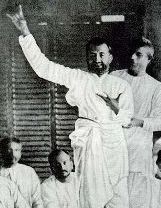
|
At a time when the very foundation of religion, faith in God, was crumbling under the relentless blows of materialism and skepticism, Sri Ramakrishna, through his burning spiritual realizations, demonstrated beyond doubt the reality of God and the validity of the time-honored teachings of all the prophets and saviors of the past, and thus restored the falling edifice of religion on a secure foundation. |
|
The greatest contribution of Sri Ramakrishna to the modern world is his message of the harmony of religions. To Sri Ramakrishna all religions are the revelation of God in His diverse aspects to satisfy the manifold demands of human minds. Like different photographs of a building taken from different angles, different religions give us the pictures of one truth from different standpoints. They are not contradictory but complementary. Sri Ramakrishna faithfully practiced the spiritual disciplines of different religions and came to the realization that all of them lead to the same goal. Thus he declared, "As many faiths, so many paths." The paths vary, but the goal remains the same. Harmony of religions is not uniformity; it is unity in diversity. |
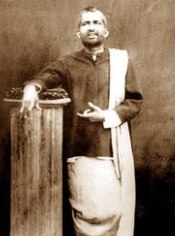
|
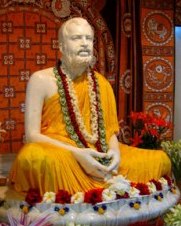
|
It is not a fusion of religions, but a fellowship of religions based on their common goal -- communion with God. This harmony is to be realized by deepening our individual God-consciousness. In the present-day world, threatened by nuclear war and torn by religious intolerance, Sri Ramakrishna's message of harmony gives us hope and shows the way. May his life and teachings ever inspire us. |
SRI SARADA DEVI, THE HOLY MOTHER
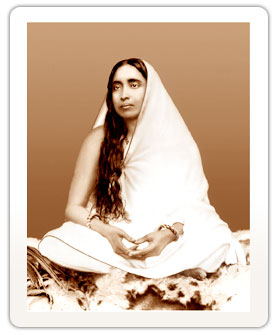
|
"When Holy Mother came to Dakshineswar at the age of sixteen, Sri Ramakrishna asked her whether she had come to pull him down to a worldly life. Without hesitation she said, "No, I am here to help you realize your Chosen Ideal." From then on, Holy Mother lived with Sri Ramakrishna as his spiritual companion, devoted wife, disciple, and always the nun. She was the embodiment of purity. Her mind was never sullied by the faintest breath of worldliness, though she lived with Sri Ramakrishna for the greater part of fourteen years. She never missed communion with God, whom she described as lying in the palm of her hand, though she was engaged day and night in various activities. |
|
"Holy Mother was an unusual awakener of souls. With her disciples she served as teacher, dissolving their doubts, as mother, who through love and compassion won their hearts, and as the Divinity, who assured them of liberation. Herself nearly illiterate, through simple words she taught them the most profound truths. Her affectionate maternal love tamed their rebellious spirits; but her great power lay in her solicitude for all. Often she said, "I am the Mother, who will look after them if not I ?" She encouraged them when they were depressed because of slow spiritual progress, and she took upon herself their sins and iniquities, suffering on that account. |
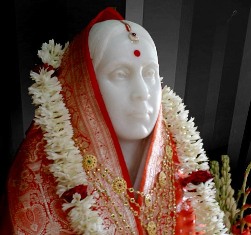
|
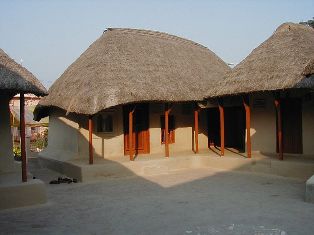
|
"Holy Mother was conscious of her divine nature, but she rarely expressed this awareness. For many years Sri Ramakrishna practiced great austerities and formally renounced the world, but Holy Mother lived as a simple householder, surrounded by quarrelsome and greedy relatives. As a teacher she taught the realization of God alone is real, and everything else, impermanent. The human body so treasured by most people, survives cremations as only three pounds of ashes. Holy Mother -- humility itself -- claimed that she was in no way different from other devotees of the Master. Her disciples felt awed and uplifted when she blessed them by touching their head with the same hand which had touched the feet of God. She was fully aware of her disciples' present limitations and their future possibilities. No one went away from her with a downcast heart. |
|
"The outstanding virtues of Indian womanhood are courage, serenity, self-control, sweetness, compassion, wisdom, and an intuitive relationship with God. Holy Mother possessed all these virtues. Since the acquisition of such gifts is the dream of all women, Holy Mother may aptly be seen as the symbol of aspiration of women everywhere." |
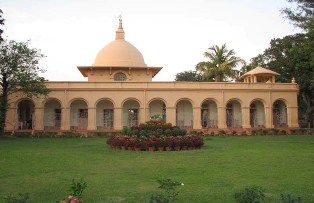
|
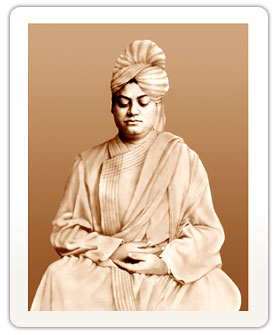
|
SWAMI VIVEKANANDA'S inspiring personality was well known both in India and in America during the last decade of the nineteenth century and the first decade of the twentieth. The unknown monk of India suddenly leapt into fame at the Parliament of Religions held in Chicago in 1893, at which he represented Hinduism. His vast knowledge of Eastern and Western culture as well as his deep spiritual insight, fervid eloquence, brilliant conversation, broad human sympathy, colourful personality, and handsome figure made an irresistible appeal to the many types of Americans who came in contact with him. People who saw or heard Vivekananda even once still cherish his memory after a lapse of more than half a century. |
|
In America Vivekananda's mission was the interpretation of India's spiritual culture, especially in its Vedantic setting. He also tried to enrich the religious consciousness of the Americans through the rational and humanistic teachings of the Vedanta philosophy. In America he became India's spiritual ambassador and pleaded eloquently for better understanding between India and the New World in order to create a healthy synthesis of East and West, of religion and science. |
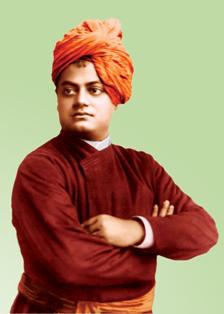
|
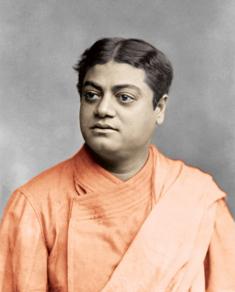
|
Vivekananda is regarded as the patriot saint of modern India and an inspirer of her dormant national consciousness, To the Hindus he preached the ideal of a strength-giving and man-making religion. Service to man as the visible manifestation of the Godhead was the special form of worship he advocated for the Indians, devoted as they were to the rituals and myths of their ancient faith. Many political leaders of India have publicly acknowledged their indebtedness to Swami Vivekananda. |
|
The Swami's mission was both national and international. A lover of mankind, he strove to promote peace and human brotherhood on the spiritual foundation of the Vedantic Oneness of existence. A mystic of the highest order, Vivekananda had a direct and intuitive experience of Reality. He derived his ideas from that unfailing source of wisdom and often presented them in the soulstirring language of poetry. |
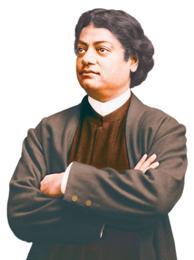
|
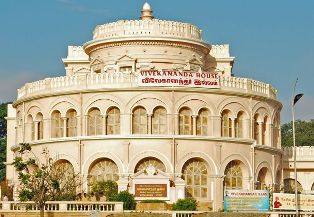
|
The natural tendency of Vivekananda's mind, like that of his Master, Ramakrishna, was to soar above the world and forget itself in contemplation of the Absolute. But another part of his personality bled at the sight of human suffering in East and West alike. It might appear that his mind seldom found a point of rest in its oscillation between contemplation of God and service to man. Be that as it may, he chose, in obedience to a higher call, service to man as his mission on earth; and this choice has endeared him to people in the West, Americans in particular. |
|
In the course of a short life of thirty-nine years (1863-1902), of which only ten were devoted to public activities-and those, too, in the midst of acute physical suffering-he left for posterity his four classics: Jnana-Yoga, Bhakti-Yoga, Karma-Yoga, and Raja-Yoga, all of which are outstanding treatises on Hindu philosophy. In addition, he delivered innumerable lectures, wrote inspired letters in his own hand to his many friends and disciples, composed numerous poems, and acted as spiritual guide to the many seekers, who came to him for instruction. He also organized the Ramakrishna Order of monks, which is the most outstanding religious organization of modern India. It is devoted to the propagation of the Hindu spiritual culture not only in the Swami's native land, but also in America and in other parts of the world. |
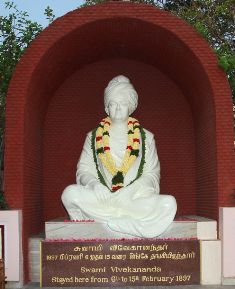
|
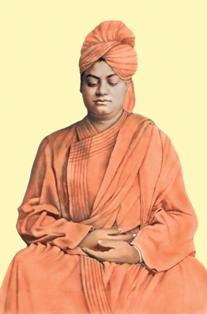
|
Swami Vivekananda once spoke of himself as a "condensed India." His life and teachings are of inestimable value to the West for an understanding of the mind of Asia. William James, the Harvard philosopher, called the Swami the "paragon of Vedantists." Max Muller and Paul Deussen, the famous Orientalists of the nineteenth century, held him in genuine respect and affection. "His words," writes Romain Rolland, "are great music, phrases in the style of Beethoven, stirring rhythms like the march of Handel choruses. I cannot touch these sayings of his, scattered as they are through the pages of books, at thirty years' distance, without receiving a thrill through my body like an electric shock. And what shocks, what transports, must have been produced when in burning words they issued from the lips of the hero!'' |
